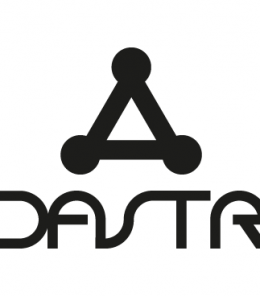What Is Certified Payroll? 2023 Guide


In order to calculate fringe benefits, you need to first determine the prevailing wage for the project. Once you have that, you will need to provide workers with a basic hourly wage plus fringe benefits that add up to the required prevailing wage for their position and the county the project is being completed in. In addition to these specific DIR certified payroll details, you’ll need to include basic payroll information like workers’ social security numbers, contractor name (your company’s details), and payroll period.
- It states that all of the forms are correct and that no employee is paid less than the prevailing wage for the work they performed on the project.
- It includes a detailed description of the wages paid to each employee, their working hours, payments, and benefits withheld.
- Setting up payroll is a common challenge for small businesses, and this process only becomes more complex if you have to figure certified payroll on top of that.
- This form includes details about your employees, their wages and benefits, the type of work they performed and the total number of hours they work.
- Attaining the Certified Payroll Professional (CPP) designation verifies mastery of payroll knowledge, skills, and abilities and is recognized by the payroll industry as the gold standard in payroll certification.
- Yes, it is absolutely necessary to report certified payroll to the right authorities.
The prevailing wage was instituted to protect workers by ensuring they are being compensated fairly and at a rate similar to what they would be paid for similar work. The U.S. Department of Labor can help you find your wage determination. It lists the wage rates and fringe benefit rates for each labor category.
Tips to Improve Accounts Payable in Construction
It is important to accurately track and record employee hours, wages, and benefits – this ensures that every week the right data can be supplied. With that said, let’s take a closer look at each part of certified payroll reporting. Mistakes can happen, and there are corrective measures that contractors can take to remedy the situation. But egregious mistakes can result in being barred from bidding on future government construction projects, having payments withheld, or paying interest penalties for wage restitution payments. Under the Davis-Bacon Act, you’re required to pay not less than the prevailing wage, including fringe benefits.
So, together, the cash wages you pay your workers plus fringe benefits provided must add up to the prevailing wage on an hourly basis. So, you’ve earned a coveted government contract and now you find out that you have to file something called certified payroll. You likely https://www.bookstime.com/articles/double-declining-balance-method have a lot of questions, primarily “what is certified payroll? If you knowingly violate the Davis-Bacon Act, your business could be fined or terminated as a government contractor. Knowingly submitting false payroll information could lead to criminal or civil prosecution.
Who creates certified payroll reports?
Depending on the state, you might be required to submit different forms. For federal compliance, payroll form WH-347 can be used as it meets all the requirements. Certified payroll needs to be filed weekly, from the first week of starting the actual work until the last week of the work. However, there are times when no work is being done on-site, which could be due to weather conditions, for example.
The prevailing wage rates vary by the location of where the work is performed and the job title of your employees. The U.S. Department of Labor can help you find your wage determination by providing a list of the wage rates and fringe benefit rates for each labor category in a given locality. If so, you’ll likely need to become familiar with certified payroll reporting when is certified payroll required and what the Davis-Bacon Act means for you. However, QuickBooks Time provides employee wage data—such as an employee’s wages and hours worked and the type of work they performed—that can be used to complete a certified payroll report. When working on government-related projects, employees may be paid in wages or a combination of wages and fringe benefits.
Questions related to certified payroll
Prior to joining the team at Forbes Advisor, Cassie was a Content Operations Manager and Copywriting Manager at Fit Small Business. Big fan of playing tennis, snowboarding, traveling, reading books, and (of course) I live and breathe our product. Attaining the Certified Payroll Professional (CPP) designation verifies mastery of payroll knowledge, skills, and abilities and is recognized by the payroll industry as the gold standard in payroll certification. In past roles, he worked for residential developers in Virginia and a commercial general contractor in Bar Harbor, Maine. Jonny holds a BBA in Financial Economics from James Madison University. After college, he spent two and a half years as a Peace Corps Volunteer in Kenya.
- To meet these requirements, your employees’ gross wages must meet the prevailing wage requirements for work on similar projects in the surrounding areas.
- This work becomes more time-consuming, the more employees you have and the more jobs you work on.
- These acts ensure that the workers who work on public works projects such as schools and hospital construction, building metro, highways, and other public-use buildings are paid fairly.
- This form includes information about your employees, their wages and the total number of hours worked.
- Their gross wages must be no less than “the local prevailing wage rates for corresponding work on similar projects in the area.” The same rule applies to fringe benefits.











